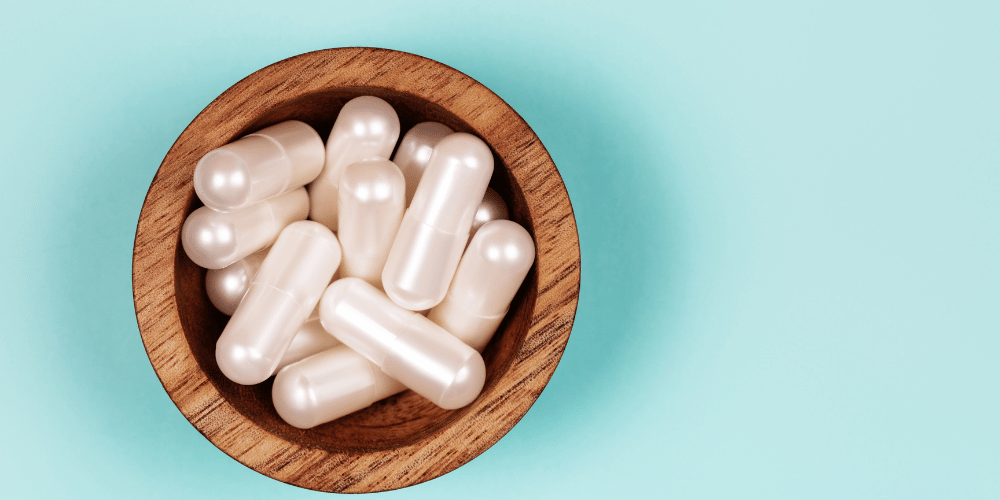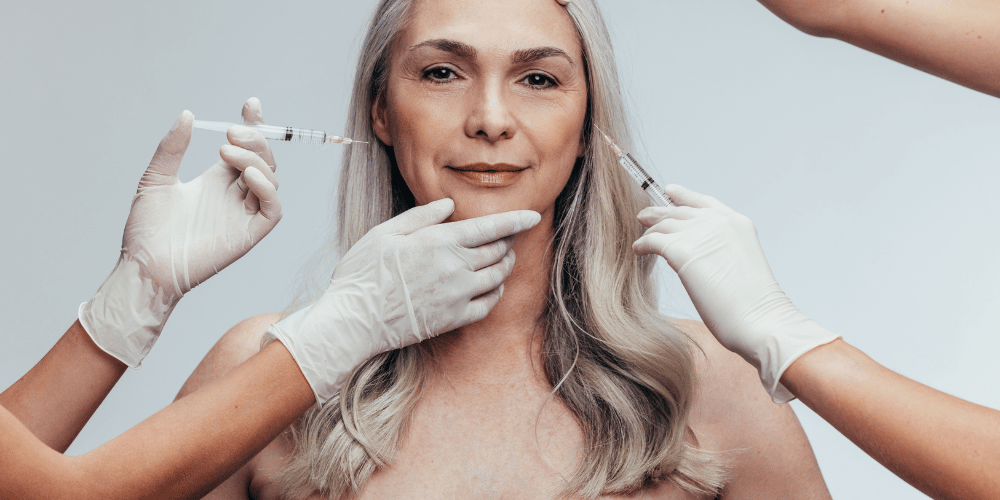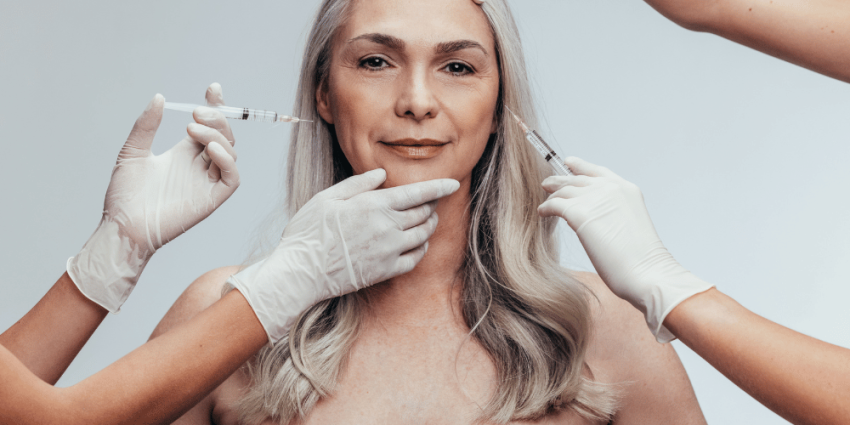Wrinkles, sagging skin, and fine lines—all signs of aging that we’d like to keep at bay as long as possible. Unfortunately, as we age, our skin loses its elasticity, resulting in wrinkles and sagging skin. This is mainly due to a decrease in collagen production. Collagen is a protein found naturally in our bodies that helps keep the skin looking firm and full. As we age, however, collagen production slows down. But there are ways to restore it! In this article, we will discuss how to restore collagen in the face naturally so you can keep your youthful glow for years to come.
Foods that promote collagen production
There are certain foods that can help promote collagen production in the body. These include:
1. Vitamin C-rich foods: Foods rich in vitamin C are essential for collagen production. Some good sources of vitamin C include citrus fruits, tomatoes, bell peppers, broccoli, Brussels sprouts, and strawberries.
2. Bone broth: Bone broth is a great source of collagen since it contains gelatin. Gelatin is a protein that helps promote collagen production.
3. Fish: Fish is a good source of omega-3 fatty acids, which are important for maintaining healthy skin. Omega-3 fatty acids help reduce inflammation and improve skin elasticity. Some good sources of omega-3 fatty acids include salmon, tuna, mackerel, and sardines.
4. Avocados: Avocados are a good source of vitamin E, which is an antioxidant that helps protect the skin from damage caused by free radicals. Free radicals can cause premature aging and wrinkles.
5. Nuts and seeds: Nuts and seeds are a good source of zinc, which is necessary for collagen production. Zinc also helps to keep the skin healthy and firm. Some good sources of zinc include pumpkin seeds, sunflower seeds, peanuts, almonds, and cashews.

What is collagen?
As we age, our skin starts to lose its elasticity and firmness. This is because our body produces less collagen, a protein that gives our skin its structure. Collagen is found in the dermis, the middle layer of the skin, and it helps to keep the skin looking plump and smooth.
When we don’t have enough collagen, our skin starts to wrinkle and sag. There are a few ways to restore collagen in the face, including:
1. Topical treatments: There are a number of over-the-counter products that claim to boost collagen production. These include creams, serums, and gels containing ingredients like retinol, vitamin C, or hyaluronic acid.
2. Laser treatments: Certain types of laser treatments can stimulate collagen production. These include fractional CO2 lasers and ultrasound devices.
3. Microneedling: This is a procedure where tiny needles are used to create microscopic injuries in the skin. This triggers the body’s wound healing response, which leads to increased collagen production.
4. Injections: Collagen injections are one of the most popular ways to restore lost volume in the face. However, they need to be repeated every few months as the body slowly breaks down injected collagen.
What causes collagen loss?
As we age, our bodies produce less collagen. This is due to many factors, including decreased hormone levels, sun damage, and poor diet.
Over time, the loss of collagen can lead to wrinkles, sagging skin, and a loss of elasticity. It can also cause dryness and thinning of the skin.
There are several ways to help reverse the effects of collagen loss. These include using topical treatments that contain retinoids or peptides, getting more vitamin C, and using a good sunscreen.
How to restore collagen in the face
As we age, our bodies produce less collagen, which leads to wrinkles and sagging skin. To restore collagen in the face, there are a few things you can do:
– Eat foods that are rich in vitamin C: Vitamin C is essential for the production of collagen. Foods that are high in vitamin C include citrus fruits, tomatoes, bell peppers, broccoli, and spinach.
– Use a topical retinoid: Retinoids stimulate the production of collagen and help to reduce the appearance of wrinkles.
– Get more sleep: Sleep helps to repair and regenerate cells, including those that produce collagen. Make sure to get at least 7-8 hours of sleep each night.
– Reduce stress: Stress can lead to the breakdown of collagen fibers. Try to reduce stress in your life by taking breaks throughout the day, meditating, or practicing yoga.
Foods that help promote collagen production
There are a few key nutrients that are essential for collagen production, including vitamin C, proline, and glycine.
Vitamin C is a powerful antioxidant that helps to protect cells from damage and promotes collagen synthesis. Proline is an amino acid that is necessary for the formation of new collagen fibers. Glycine is another amino acid that helps to strengthen collagen fibers and gives them their elasticity.
Eating foods rich in these nutrients can help support collagen production and keep your skin looking young and healthy. Some great sources of vitamin C include citrus fruits, bell peppers, broccoli, Brussels sprouts, and strawberries. For proline, eat foods like eggs, meat, dairy products, soybeans, legumes, and nuts. Good sources of glycine include fish, poultry, pork, beef, milk, yogurt, and tofu.
In addition to these foods, supplementing with collagen peptides or a collagen powder can help boost your body’s natural production of collagen.
Topical treatments for restoring collagen in the face
There are a variety of topical treatments available for restoring collagen in the face. These include creams, gels, serums, and patches.
Creams: Collagen creams are one of the most popular topical treatments for restoring collagen in the face. They are typically applied once or twice daily and can be found in both over-the-counter and prescription formulations.
Gels: Collagen gels are another popular option for restoring collagen in the face. They are typically applied once or twice daily and can also be found in both over-the-counter and prescription formulations.
Serums: Collagen serums are a newer option for restoring collagen in the face. They are typically applied once or twice daily and can be found in both over-the-counter and prescription formulations.
Patches: Collagen patches are a less common option for restoring collagen in the face. They are typically applied to specific areas of the skin that need extra treatment and can be found in both over-the-counter and prescription formulations.

Lasers and other in-office treatments for collagen restoration
When it comes to collagen restoration, lasers and other in-office treatments can be very effective. For example, laser skin resurfacing can help to stimulate new collagen growth and improve the overall appearance of the skin. Other in-office treatments such as microneedling and radiofrequency therapy can also help to promote collagen production.
At home, there are a few things you can do to help restore collagen levels in your skin. Firstly, make sure you are using a good quality sunscreen every day to protect your skin from UV damage. Secondly, include plenty of antioxidants in your diet from foods like berries and green leafy vegetables. Finally, consider using a topical retinoid cream which can help to boost collagen production.
It is important to remember that while in-office treatments and at-home care can help to improve collagen levels, it is not a permanent solution. For long-term results, it is important to maintain a healthy lifestyle with a good skincare routine and plenty of water.
Conclusion
In conclusion, restoring collagen in the face is an important part of maintaining a youthful appearance. There are several methods available to increase your skin’s natural production of collagen or provide it through external sources. Taking care of your skin is essential for achieving optimal results and adding these tips into your daily routine can help you achieve glowing, healthy looking skin.










Leave a Reply